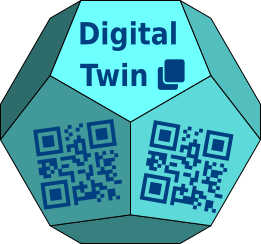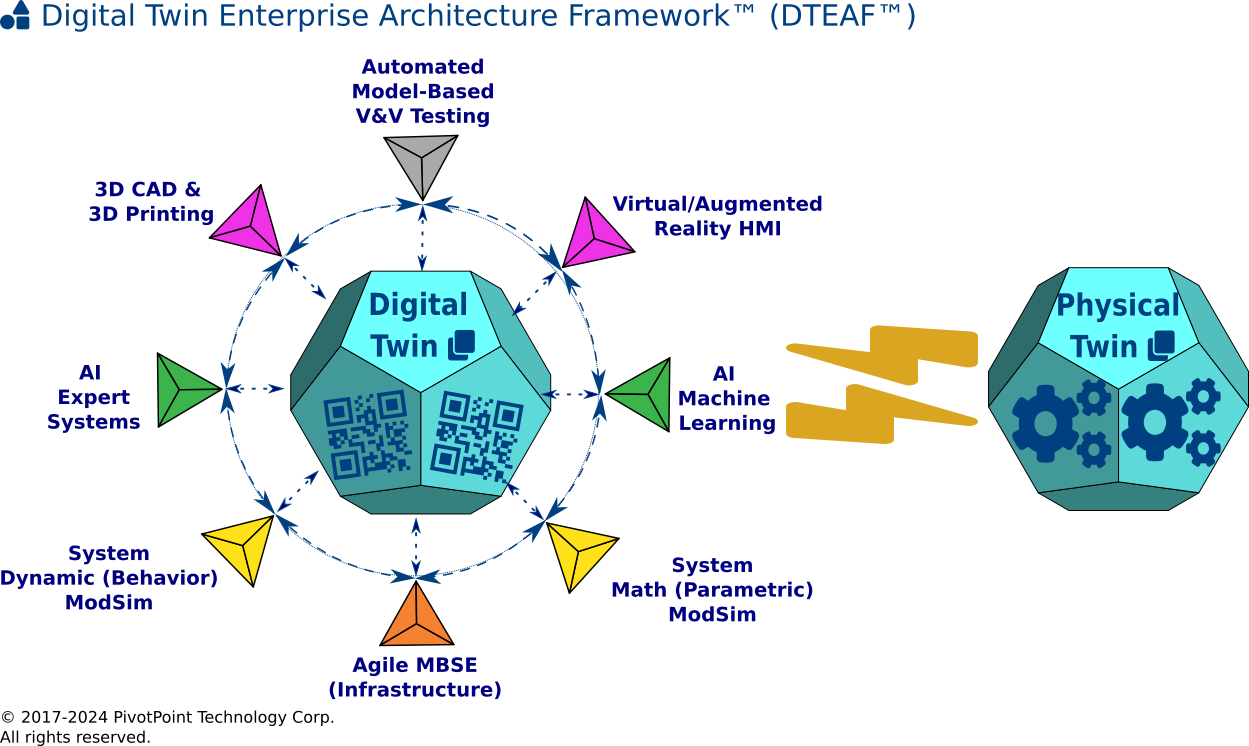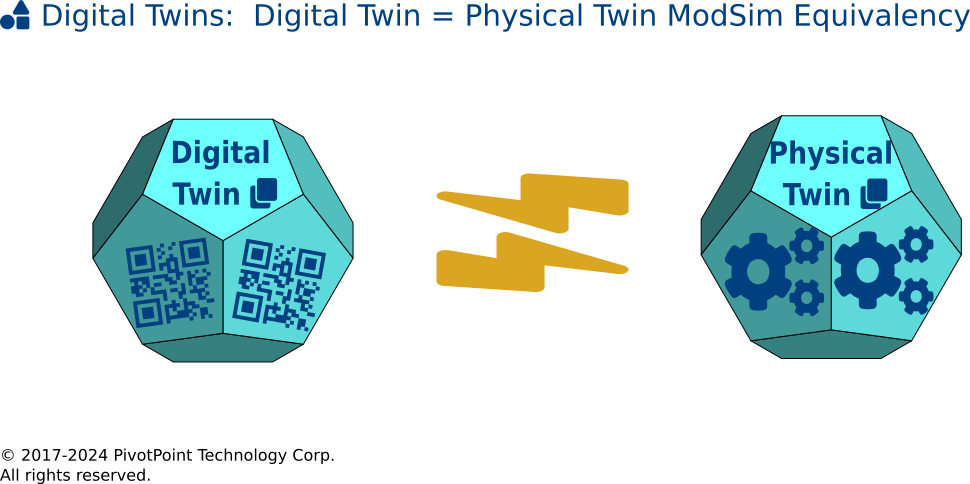DT FAQ: What is Digital Engineering?
What is Digital Engineering?
FAQ Variant(s): What is a Digital Twin?; What is Virtual Engineering?
Definition
Digital Engineering: Digital Engineering is an umbrella term referring to the synergistic application of electronic and software technologies to facilitate the architecture, analysis, design, simulation, building, and testing of complex software-intensive systems-of-systems. The ultimate goal of Digital Engineering is to produce Digital Twins, or digital replicas of real and potential physical assets (i.e., “Physical Twins”) that include both inanimate and animate physical entities (e.g., hardware, software, “wetware” [biological life]), with broad usages and where for Systems Integration & Testing purposes the former are largely indistinguishable from the latter.
Digital Engineering and its associated Digital Twins promise to revolutionize how we architect future Systems-of-Systems. The following interrelated Engineering sub-disciplines will likely play key roles in the Digital Twin technology revolution:
- Agile MBSE technologies provide the architecture infrastructure for recursively scaling and simulating Digital Twins. Agile MBSE technologies are the distillation of a quarter century of lessons-learned from Model-Driven Development (MDD), Model-Based Systems Engineering (MBSE), and Agile/Lean Development technologies, and can provide the recursive architecture and design patterns needed to address the fractal Digital Twin System-of-System challenge.
- Massive Mathematical & Dynamic M&S technologies provide the large-scale Modeling & Simulation (M&S) infrastructure necessary for recursively simulating Physical Twins as Digital Twins. It is essential that mathematical (parametric) and dynamic (behavioral) simulations for Digital Twins are fully integrated and applied on a massive scale. Compare and contrast how massive datas sets and big data fuel Machine Learning (ML) technology. Stated otherwise, if a Physical Twin is a "System-of-Systems", then a Digital Twin is a "Simulation-of-Simulations" for a "System-of-Systems".
- Artificial Intelligence (AI) & Machine Learning (ML) technologies provide the software infrastructure needed for constructing intelligent ("smart") Physical Twins, and by extension their Digital Twin counterparts. Since AI & ML technologies are rapidly transforming how software-intensive Systems-of-Systems interact with humans, these complementary technologies will play a critical role in the evolution of Digital Twin technology.
- 3D CAD & 3D Printing (a.k.a. Additive Manufacturing) technologies provide the electro-mechanical infrastructure needed for the physical construction of Physical Twins, and by extension their Digital Twin counterparts. Since [3D CAD] Design = Implementation [3D Printed Product] is rapidly transforming how we design and manufacture Systems-of-Systems, these complementary technologies will also play a vital role in the evolution of Digital Twin technology.
- Virtual Reality (VR) & Augmented Reality (AR) technologies provide the simulation infrastructure for the massive simulations (Simulation-of-Simulations) required by Digital Twins in order to be indistinguishable from their Physical Twin counterparts. Since VR/AR technologies are rapidly transforming how we interact with Systems-of-Systems, they will additionally play a critical role in the evolution of Digital Twin technology.
DIGITAL TWIN WORKS, DIGITAL TWIN ENTERPRISE ARCHITECTURE FRAMEWORK, DTEAF, AGILE MODEL-BASED SYSTEMS ENGINEERING, AGILE MBSE, and AGILE MBSE 6D EAF are trademarks of PivotPoint Technology Corporation. All other product and service names mentioned are the trademarks of their respective companies.




